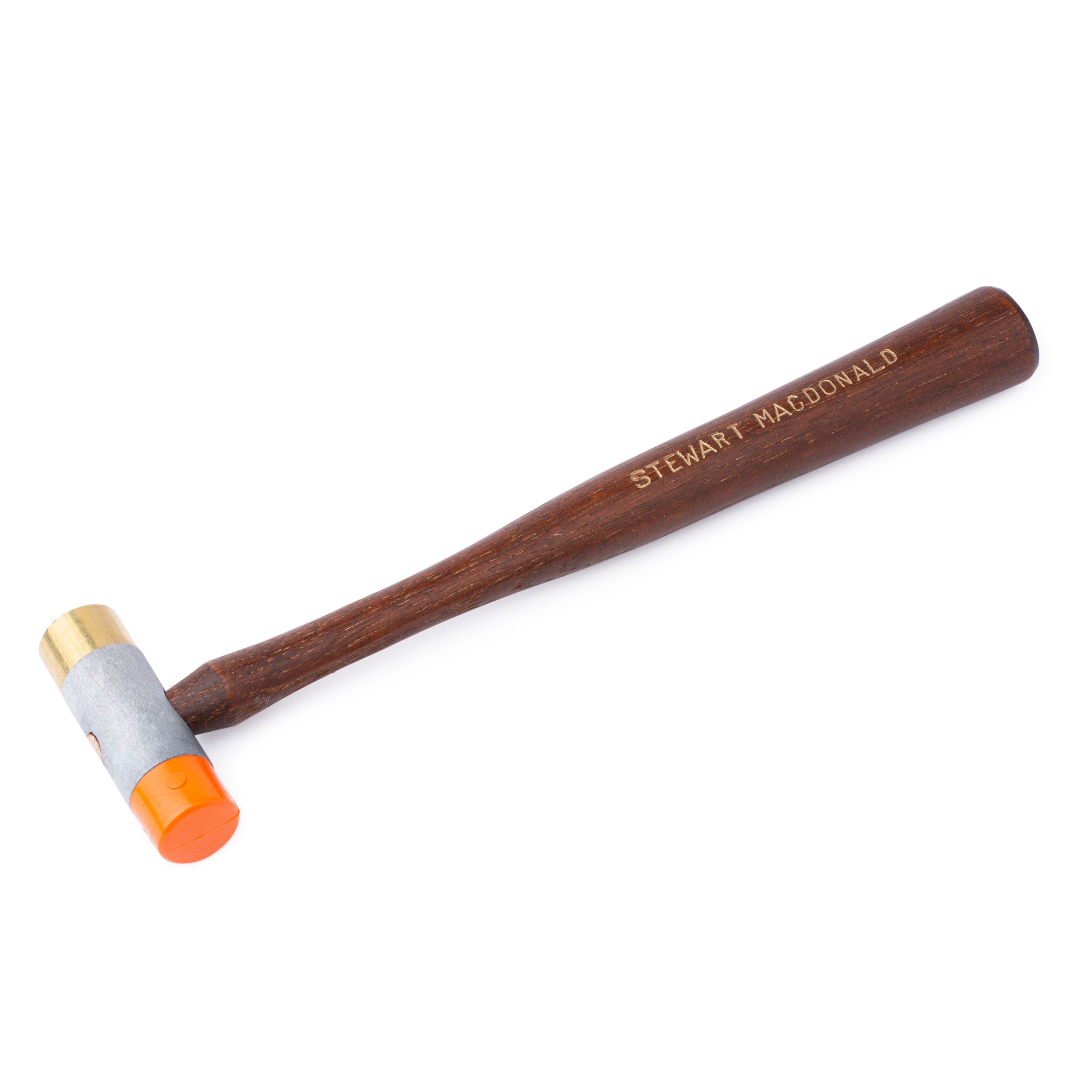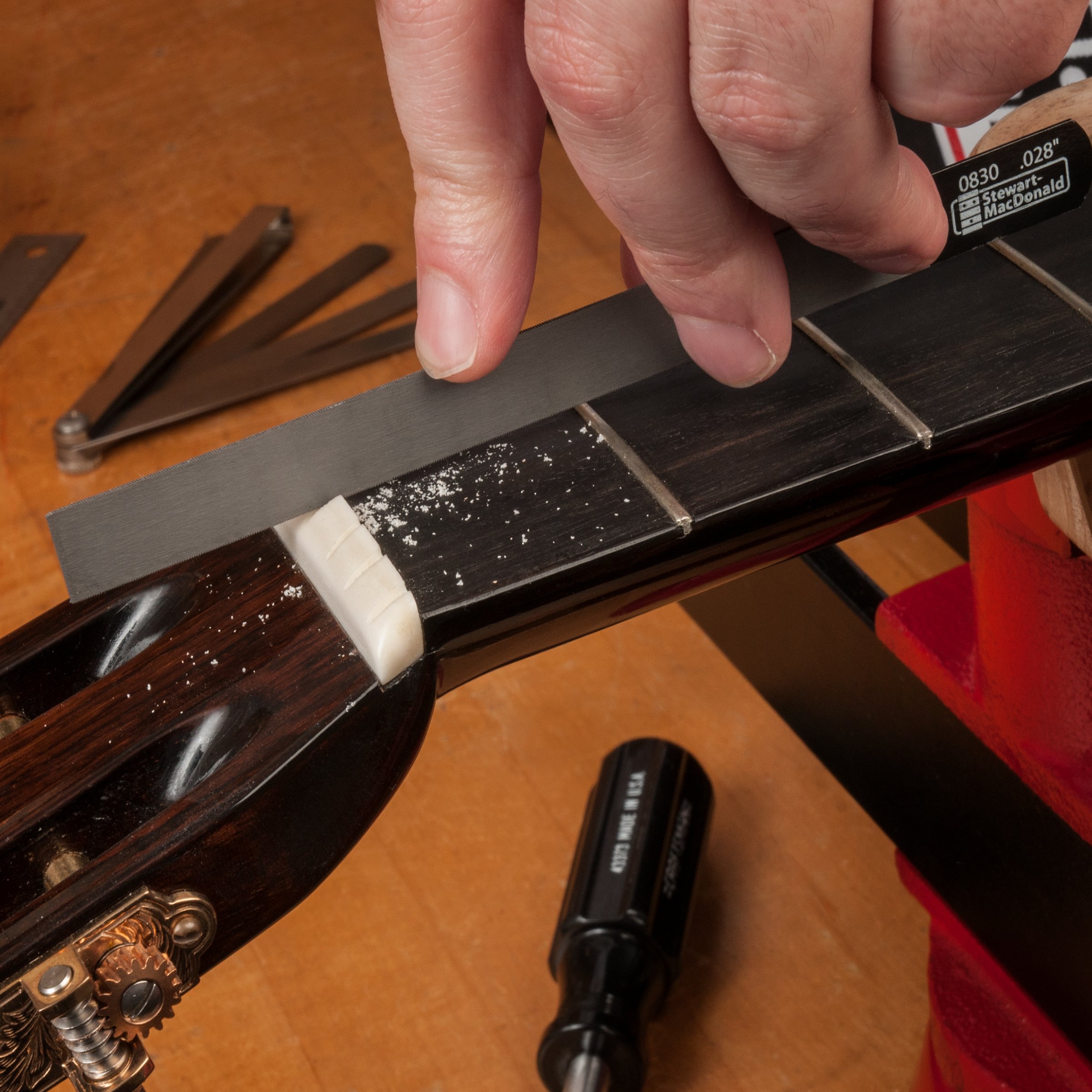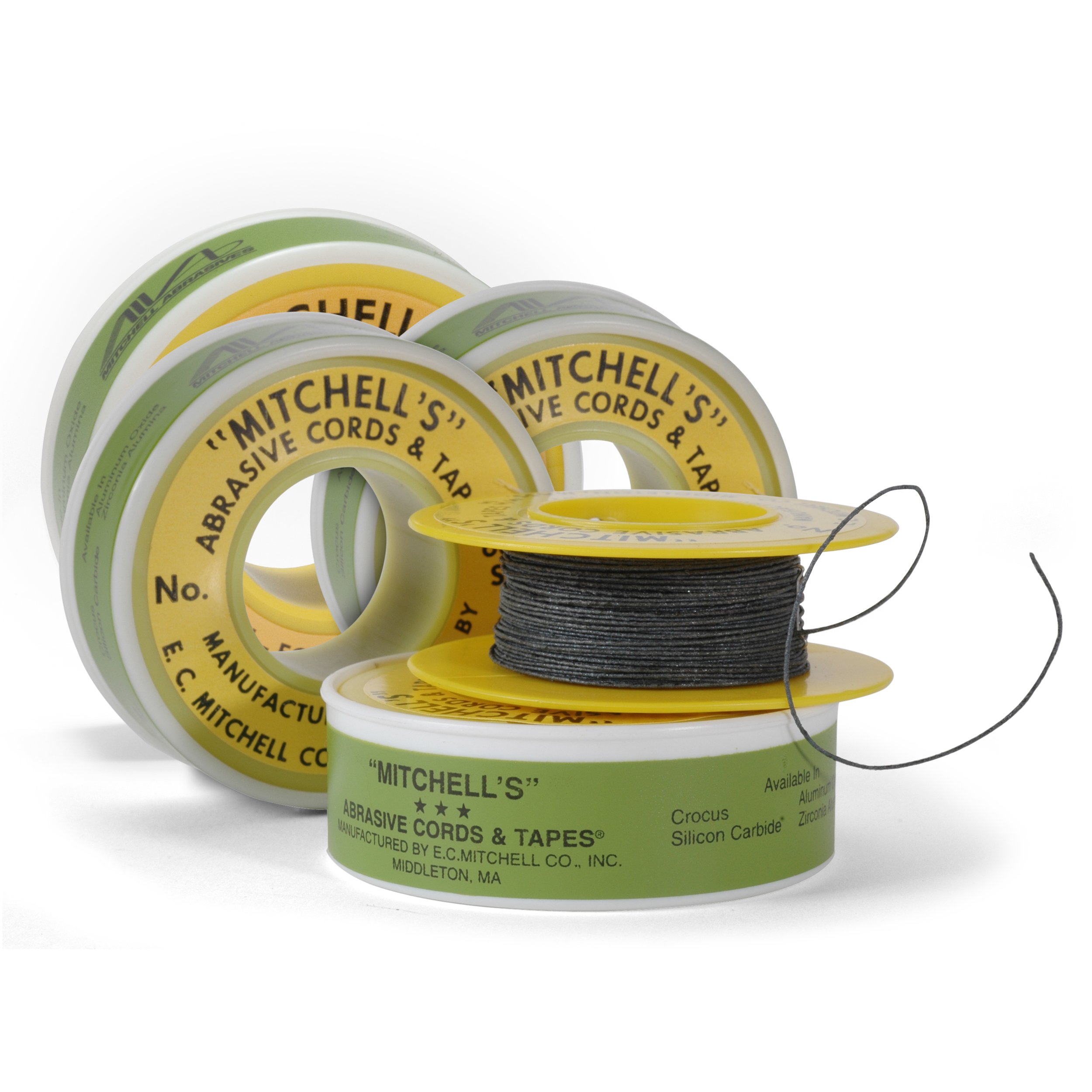How to notch the saddles on your Les Paul
Issue 196 August 01, 2013
Erick Coleman uses a hammer and X-Acto knife before filing. On this video he also talks with Dan Erlewine about how a 1954 Les Paul went from Bondo Mess to Relic Goldtop, with multiple luthiers contributing to its restoration.
About the guitar in this video: It started in 1954 as a standard Les Paul Goldtop with two P-90s and a McCarty wraptail bridge. Somebody converted it to a '57 style with two humbuckers and a tune-o-matic bridge/stop tailpiece. After that conversion went badly, the guitar was sent to United Lutherie to set it right. The customer wanted it restored to the McCarty bridge setup, but with humbuckers instead of P-90s.
- Hammering the string to set the saddle slot
- X-Acto knife and file for shaping the slot
- A modification that got a bad start gets rescued
- Don MacRostie's CNC work followed by Erick's hand-shaping
- Dave Johnson's excellent relic goldtop finish
Video Transcription
[Erick carefully hits the string directly above the saddle with a hammer]
How to notch the saddles
Erick Coleman: That's how they set the notches at Gibson.
Dan Erlewine: No filing, just hit the string and that would make its own impression and saddle.
Erick Coleman: What I'll do is with the unwound strings, I'll give a couple taps with a hammer. Enough to make a groove in the saddle and then I'll chase that with a nut slotting file. With the wound strings, I'll take an Exacto and I'll scribe a couple lines on either side of the string and then chase that in between those two marks within that slotting file in order to establish the groove.
Dan Erlewine: And you get a better groove with the file, than you're going to get with a hammer and you don't break all those strings, but we always replace the strings that we're working with when we do a set up anyway. When it goes out, it gets a brand new set.
Erick Coleman: Yep.
Dan Erlewine: Explain about why you put the Pigtail on this guitar.
Erick Coleman: The main reason was intonation. The original bridge on these old fifties Les Pauls was basically just a tail piece with no individually adjustable saddles. Once you got past the 12th fret, intonation was pretty much wide open. It didn't exist.
Dan Erlewine: I mean, you could adjust it a little bit with those screws on either end, but that was it.
Erick Coleman: Yeah. Didn't really help you 100%. This guy, he wants this guitar to play in tune all the way up the neck and so the pigtail was a great option. Has a wide intonation range, so you know you're going to pick up any variances in the post spacing you see on these old guitars. And also it was important to add as a drop in replacement. This guy drops right into the old studs without any modifications.
Dan Erlewine: And I love these studs. Those are the Tone Pros.
Erick Coleman: Yep. Tone Pros Lock and Studs.
Dan Erlewine: You're tighten them down and it keeps the bridge level and it's solid. You guys did a heck of a lot of work on this guitar.
The history of work done on this guitar
Erick Coleman: I don't even know where to start. The first thing that had happened to it at one point is somebody wanted to convert it from the 54, which was the wraptail with two P-90s to a 57 style, which would've been Humbuckers, a Tune-O-Matic, and a stop bar.
The work was not done very well. There's a lot of Bondo packed in the cavities. It just was not a clean job at all. When my customer bought it, he realized it was pretty messed up, so he wanted it done right, so he sent it up here to have us take a look at it. Took it over to Don MacRostie's and with his CNC machine, he routed out a large portion all the way down to the mahogany. Don routed-
Dan Erlewine: Was like a big swimming pool that you filled the whole thing.
Erick Coleman: Absolutely and then Don, also after he routed that all out nice and clean, he made perfect fitting plugs, two different levels of mahogany, and then a layer of maple fit over the top. I reshaped that by hand and then sent it over to our pal, Dave Johnson in Olympia, Washington. He did the routing for the pickups, because he's all jigged up to do that, and he did the finish work. His work is just very, very good.
Dan Erlewine: Did the huck and relic job, not too much, just the right amount. I love it right in there. Don't forget that you rebuilt that fingerboard in a trade secrets a couple years ago.
Erick Coleman: I did, number 131, took the fingerboard off, rebuilt the thickness from the bottom with a new piece of Brazilian and then rebound.
Dan Erlewine: It's perfect. It's beautiful.
Erick Coleman: Looks really nice and I do believe that the customer's going to be very happy.
Dan Erlewine: I would be.
Erick Coleman: Yep. Me too.






